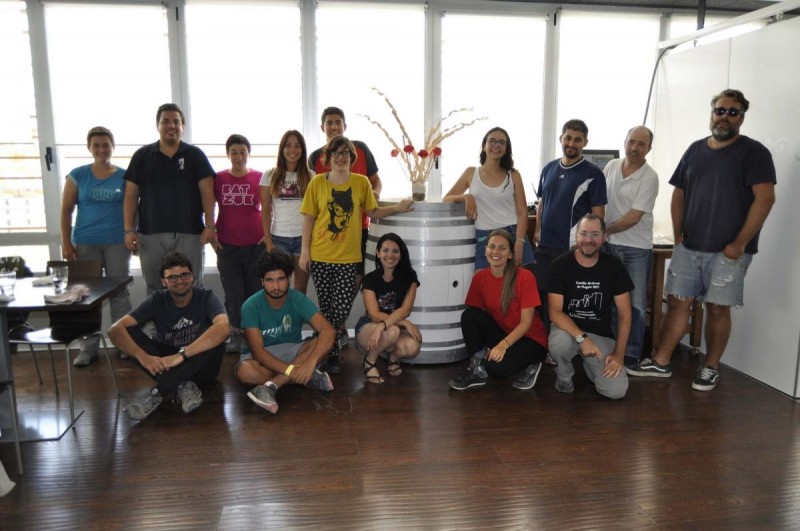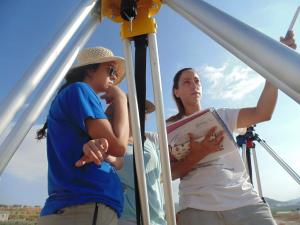Fieldwork
This listing expired on August 12, 2018. Please contact cepoat@um.es for any updated information.





Location: Murcia, MU, ES
Season: August 12, 2018 to August 26, 2018
Session Dates: From August 12th to 26th 2018
Application Deadline: August 12, 2018
Deadline Type: Exact date
Website: http://www.um.es/cepoat/schoolofarchaeology/?page_id=4761
Discount for AIA members: No
Program Type:
Field school
RPA Certified:
no
Affiliation:
Murcia University
Project Director:
Salvador Martínez Sánchez: Director Bullas Wine Museum (Bullas Town Hall). Degree in Geography and History, History of Ancient History and Archaeology. Scientific direction Villa Romana de Los Cantos (Bullas). Coordination / documentation of museum projects of Bullas Wine Museum, D. Pepe Marsilla House-Museum and Bullas Archaeology Classroom. Tourist Development Agent (for the Aylas de Bullas) and address archaeological interventions in several municipalities of the Region (Cehegín, Cieza, Murcia, Caravaca de la Cruz, Bullas).
Project Description:
This course is aimed at students and people interested in archaeology who wish to participate with us in this archaeological course at Los Cantos, located 2km south of Bullas in Murcia (Spain) where they will be able to study first hand the model of rural settlement in Roman times known as Villae.
This settlement consists of a large building with many rooms dedicated to various functions, among which we distinguish a residential area with bedrooms most of which have beautiful geometric mosaics and a thermal resort, as well as an industrial and working area dedicated to economic activities. As far as the chronology is concerned, we have an occupation beginning in the middle of the first century AD until AD II. And a second phase that extends from the 3rd to 4th century AD.
In recent years the CEPOAT has been working on this site’s development of their excavations, as the director of CEPOAT is now the director of the excavation of the site.
The Archaeology course we offer is a comprehensive training course in fundamental aspects such as stratigraphy, GIS, photogrammetry, CAD, topography, field drawing, inventory of materials, etc.
The program developed is as follows:
1. Introduction to archaeology.
1. Concept, limits and meaning of archaeology.
2. Archaeology and sources: written and materials.
3. Methods and techniques: the exploration, excavation and dating methods.
2. Methods and techniques of archaeological excavation.
1. The formation of the archaeological record: General deposition processes.
2. The concept of strata and training: relative dating. Terms ante quem and post quem. The concept of strati-graphic unit. Strati-graphic relationships between units. The matrix Harris.
3.The system open area excavation and its application in different situations.
4.The data record. The daily and strati-graphic records. The field drawing and photography in the excavation.
5.La manual collection of objects. Artifacts and registration. The recovery of small remains: screening and flotation. The first preservation of the remains in the field.
3. The archaeological field drawing.
1. Introduction to archaeological field drawing: registration.
2. Main instruments and materials of archaeological field drawing.
3. Techniques for making the flatness of the site: the perpendicular to the reference axis, triangulation, cross drawing, elevations and walls.
4. The flatness: scale and landmarks.
5. The use of new technologies for the drawing: photogrammetry.
6. The Kite aerial photography (KAP).
4. The layout of the site: basic principles of surveying, leveling and total station.
1. The layout of the site: basic principles.
2. Basic Principles of surveying and leveling.
3. How to install a level and take dimensions.
4. The use of the Total Station.
5. The recording of archaeological remains: materials inventory.
1.The archaeological inventory: method and phases.
2.Physical characteristics and technology of archaeological materials.
3.Physics description , use and functionality of the archaeological material.
4.The record of archaeological materials: inventory. Cleaning, sorting, and numbering. Tables and databases.
6. Ceramics: Roman pottery.
1. Republican Roman pottery
2. Imperial Roman pottery
3. Late Roman pottery: main productions.
7. The technical drawing of archaeological materials.
1. The technical drawing of archaeological materials: basic principles.
2. Materials needed for technical drawing of archaeological materials.
3. Phases technical drawing: outline, details, profile and section.
4. Scale, frame and shadow drawing artifacts.
5. The technical drawing of pottery pieces.
6. The digital drawing of archaeological materials.
8. Computer Management archaeological record: Draftsight, Inkscape, Gimp, Databases, etc.
1. Vector Drawing with Draftsight and Inkscape.
2. Photo retouching with Gimp.
3. Databases with Libre Office.
9. SIG. Applications to the archaeology of the area.
1. Basic concepts of cartography.
2. Using QGIS.
3. Geo-referencing of raster data.
4. Generation of Digital Terrain Models.
5. The interpolation of vector data.
10. Preventive conservation and restoration of sites.
1. Buried and exhumed objects. The conservation of movable and immovable property.
2.Getting care of the objects found in the intervention. The figure of the restored-conservative archaeological excavation equipment.
3. Preventive conservation of archaeological remains: bindings and coating remains.
4. The restoration of the deposits: intervention criteria. Methods and techniques.
11. Presentation of results: writing memoirs, interpretation and publications.
1. The development of the report of archaeological excavation.
2. The presentation of the results: Final Report.
3. Content of Memory: results, performance, floor plans, records of strati-graphic units, photographic repertoire, materials inventory, etc.
4. Publication of the results: social obligation
5. How to prepare press releases, scientific articles and conferences.
Period(s) of Occupation: Roman
Notes:
This course is aimed at students and people interested in archaeology who wish to participate with us in this archaeological course at Los Cantos, located 2km south of Bullas in Murcia (Spain) where they will be able to study first hand the model of rural settlement in Roman times known as Villae.
Project Size: 1-24 participants
Minimum Length of Stay for Volunteers: 15 days
Minimum Age: 18
Experience Required: No experience is required but preference is given to undergraduate and graduates studying relevant fields of knowledge but other people interested in this field are also welcome.
Room and Board Arrangements:
Students in the course will reside on the Camping La Rafa. This hostel offers group rooms, public toilets, laundry, and leisure spaces for young people. The hostel also provides bedding. Capacity: 10 people. Breakfast, mid morning snack, lunch and dinner will be prepared by a local chef at a nearby lodge restaurant. If there is a vegetarian student must advise us at the beginning of the course. Cost: 200€
Academic Credit:
5 credits offered by Murcia University. Tuition is Yes.
Jose Javier Martinez Garcia - Cepoat
Cepoat - Saavedra Fajardo University Building C / Actor Isidoro Máiquez 9
Murcia
Murcia
30007
Spain
Phone: 0034 666125197
The AIA is North America's largest and oldest nonprofit organization dedicated to archaeology. The Institute advances awareness, education, fieldwork, preservation, publication, and research of archaeological sites and cultural heritage throughout the world. Your contribution makes a difference.